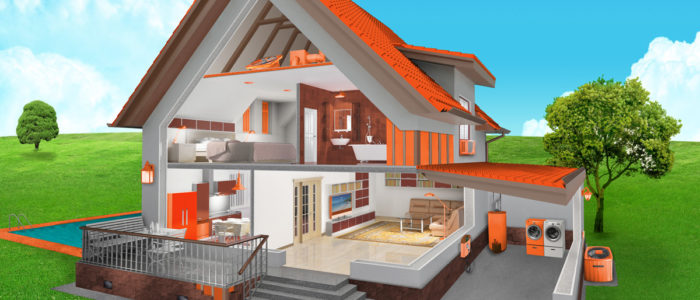Home Performance Success with Spray Foam Attic Encapsulation
Huntsville attics are getting a new look that’s out of sight, but not out of mind. AlabamaWISE home performance contractors use a strategy called attic encapsulation to improve indoor comfort and cut energy waste, too. Homeowners are finding they can save on utility costs without breaking a sweat.
Nexus Energy Center and homeowners Kevin and Judy Street hosted a open house for neighbors to come in and feel the cool comfort from home energy improvements they recently completed.
Visitors to the Street’s brick ranch could feel the impact of the heating, cooling and insulation improvements as they mingled cool, dry air flowing from the completely new system located in the attic.
Energy contractor Gary from Synergy Airflow and Ventilation led adventurous visitors on a behind-the-scene tour into the attic space to witness the complete transformation of the home’s comfort system to work better and save money by reducing energy waste.
As visitors climb a step ladder into the attic they were greeted by large dial thermometer that confirmed the surprising coolness of a space that is normally unbearably hot during summer months.

Gary from Synergy shows the completed attic encapsulation to AlabamaWISE program manager Daniel Tait, lower right.
Synergy used a strategy known as attic encapsulation to save energy by lowering the summer attic temperature from about 140 degrees to 78 degrees – the same temperature as the living area. During winter months attic temperatures will now be the same 68 degrees as the rest of the home instead of 30 or 40 degrees on winter days.
Energy savings accrue because the hot and cold air in the duct system doesn’t lose energy to the outdoor environment when the entire attic is encapsulated and sealed with a thick layer of spray foam on the underside of the roof deck. They also block off all soffit and roof vents, to make the attic part of the home’s conditioned space.
Attics with heating and cooling systems can reap huge energy savings and improved performance by moving the insulation from the attic floor to the roof deck as done for the Street home.
Most homes are built using a layer of fiberglass insulation placed on the attic floor. Most attics are ventilated to outdoors with soffit vents, gable vents or roof vents to help lower summer attic temperatures which can hit 140 degrees or more because heat builds up from sun on the roof. Placing heating and cooling components in an unconditioned attic is worse than putting it outdoors because of the extreme temperatures.
The attic encapsulation was achieved with low density foam sprayed on the roof deck and over all holes and framing connections to seal any air leaks and keep the conditioned air inside the home. A large part of energy waste is the result of conditioned air escaping from the home and spray foam is usually used to seal around penetrations for plumbing, wiring and vent pipes, even when fiberglass is used for insulation.
After improving insulation and air sealing, Synergy, designed the heating and cooling system size and duct design to match insulation performance. This systems-based approach is the unique benefit of home performance contractors. Specifying heating and cooling components that match the home’s insulation levels is done with a Manual J calculation to calculate thermal loads based on the home’s design and climate.
Finally, Synergy also designed a new duct system to distribute conditioned air efficiently and effectively. A Manual D calculation is performed to specify the correct duct size and distribution pattern.
Many home comfort problems and lots of energy waste is caused by duct systems that can’t supply the right amount of hot or cold air to the room. The HVAC equipment and the duct system must be correctly sized and matched and homeowners turned to an AlabamaWISE home performance contractor like Synergy to assure satisfaction with comfort and energy savings.


Comments are closed.